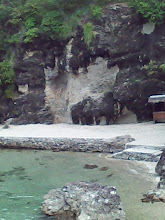You can remove the background or backdrop behind an object in a picture with a process called background removal. This process can remove the background in its entirety, or you can choose sections or parts that you desire from a backdrop to be removed.
The advent of digital photography and its accompanying technologies has made background removal an easy editing fix. Before such capabilities were available, background removal of a photograph was a more difficult process.
It was once done in a darkroom under all of the proper temperature and ambient conditions. The film was watched closely while submerged in a working solution. By overexposing the film to the solution, the background was blurred and has a decrease in resolution.
Today, background removal is possible with any digital photo editing software like GNU Image Manipulation Program, or GIMP. GIMP is a special type of graphics editing application that is able to support some kinds of object-oriented (or vector) graphics.
Should your digital photo editing software used for background removal not be able to support all kinds of object-oriented graphics don't worry. The advantage to GIMP is that it allows for easy vector to raster conversion.
Other popularly used raster graphics editors and digital photo editors will also work just fine. Most digital photo editors have a number of plug-ins which can modify the background in different ways. Plug-ins are computer programs with highly specific purposes. Most sophisticated photo editing programs use special purpose plug-ins and will perform background editing and removal based on different criteria.
Objects without backgrounds can be used in several different ways. They can be placed in a new backdrop and in different situational contexts. For eg.: a couch in furniture showroom could have the furniture showroom replaced with an office. The object can be moved around any which way and it's alignment w.r.t the new background can also be changed.
The interesting thing about an object without a background is that it retains all its properties like shape and size, but makes itself more flexible to individual usage.
June 4, 2009
Source: http://articlefarm.com/entertainment/photography/remove-backgrounds.html
The advent of digital photography and its accompanying technologies has made background removal an easy editing fix. Before such capabilities were available, background removal of a photograph was a more difficult process.
It was once done in a darkroom under all of the proper temperature and ambient conditions. The film was watched closely while submerged in a working solution. By overexposing the film to the solution, the background was blurred and has a decrease in resolution.
Today, background removal is possible with any digital photo editing software like GNU Image Manipulation Program, or GIMP. GIMP is a special type of graphics editing application that is able to support some kinds of object-oriented (or vector) graphics.
Should your digital photo editing software used for background removal not be able to support all kinds of object-oriented graphics don't worry. The advantage to GIMP is that it allows for easy vector to raster conversion.
Other popularly used raster graphics editors and digital photo editors will also work just fine. Most digital photo editors have a number of plug-ins which can modify the background in different ways. Plug-ins are computer programs with highly specific purposes. Most sophisticated photo editing programs use special purpose plug-ins and will perform background editing and removal based on different criteria.
Objects without backgrounds can be used in several different ways. They can be placed in a new backdrop and in different situational contexts. For eg.: a couch in furniture showroom could have the furniture showroom replaced with an office. The object can be moved around any which way and it's alignment w.r.t the new background can also be changed.
The interesting thing about an object without a background is that it retains all its properties like shape and size, but makes itself more flexible to individual usage.
June 4, 2009
Source: http://articlefarm.com/entertainment/photography/remove-backgrounds.html

No comments:
Post a Comment